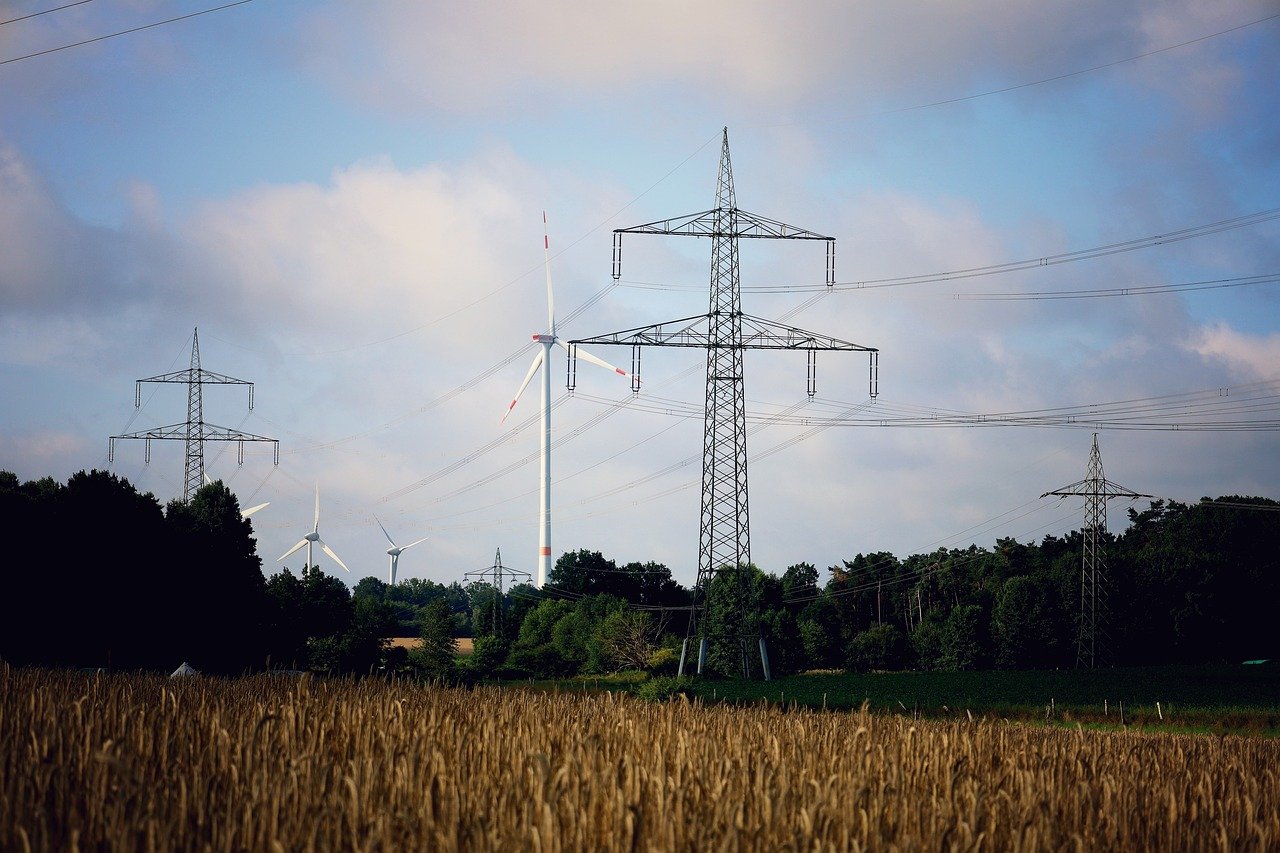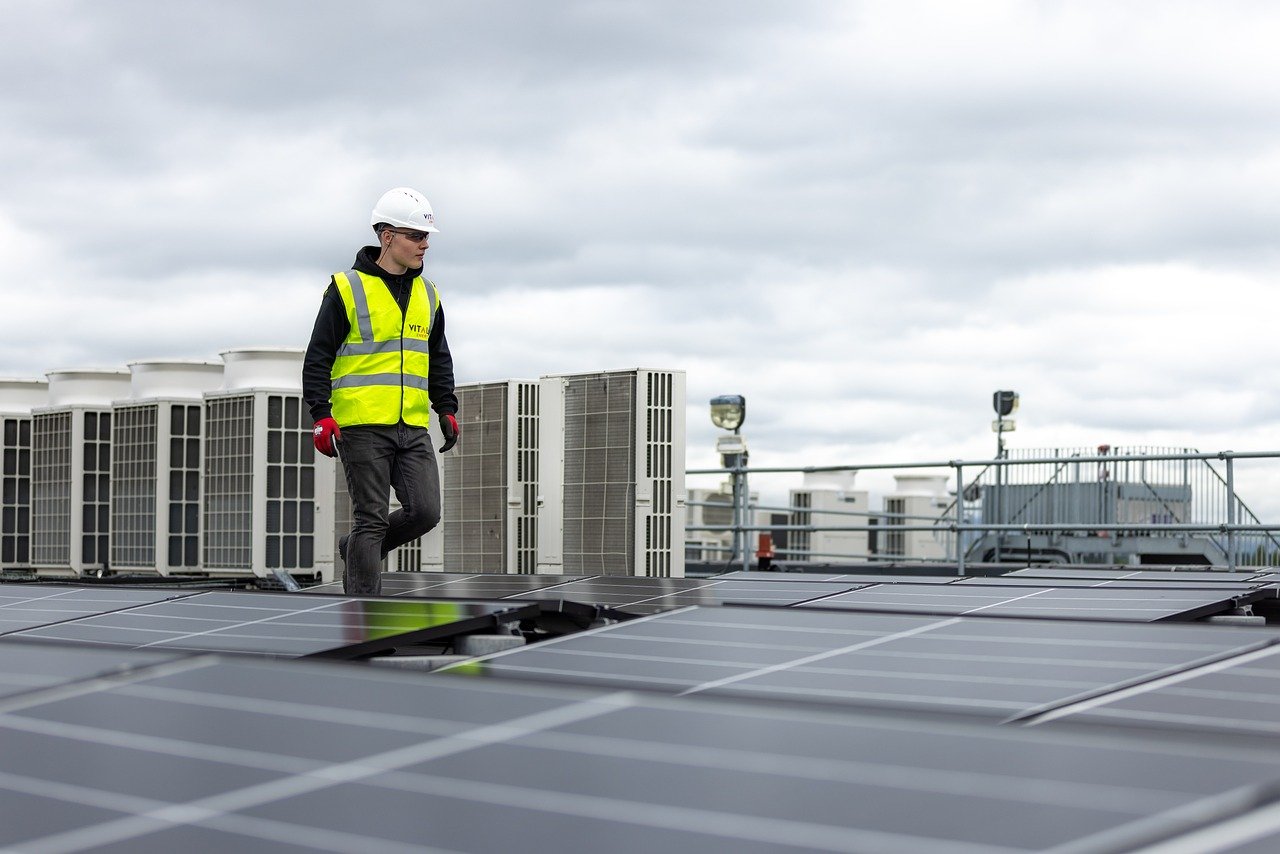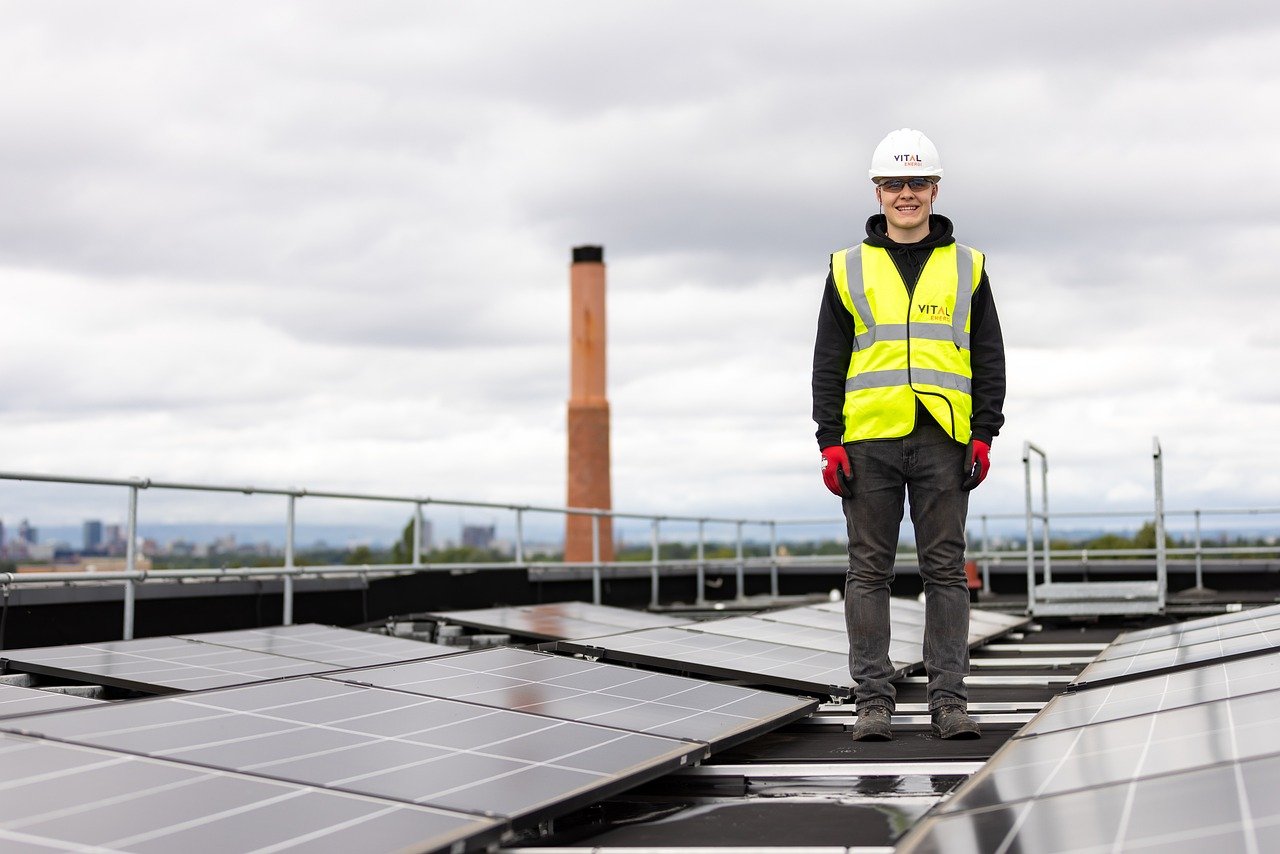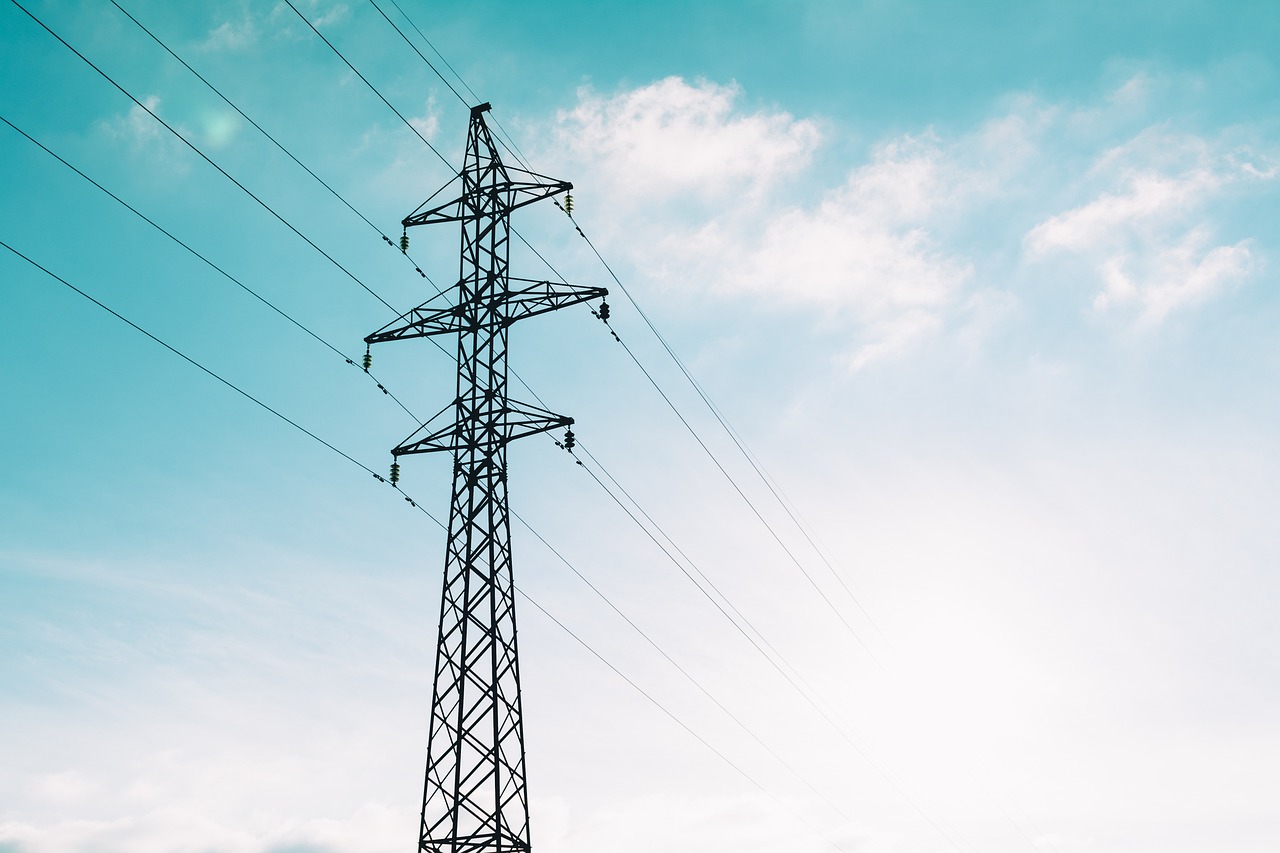What is Holding Us Back from Utilizing Green Energy?
In today's rapidly changing world, the push for green energy has never been more critical. Yet, despite the overwhelming evidence supporting its necessity, we often find ourselves asking: what is truly holding us back from fully embracing these sustainable solutions? The barriers are multifaceted, ranging from economic challenges to societal perceptions. Understanding these obstacles is essential if we want to pave the way for a cleaner, greener future.
First and foremost, we must consider the economic challenges that come with transitioning to green energy. Many renewable technologies require significant upfront investments, which can be a daunting prospect for both governments and private enterprises. The uncertainty surrounding market conditions can further complicate this issue, leading to hesitance in committing to long-term green energy projects. It's like deciding to buy a house; you want to ensure that you're making a sound investment. In the world of energy, this means understanding the fluctuating costs of renewable technologies and the potential return on investment.
Moreover, the technological limitations of renewable energy sources cannot be overlooked. While advancements have been made, certain technologies still face significant hurdles. For instance, effective energy storage is crucial for managing the supply of renewable energy. Without reliable storage solutions, we risk wasting valuable energy generated during peak production times. Imagine filling a bucket with water but having a hole in the bottom; no matter how much you pour in, it will never fill up. Similarly, without efficient storage, we cannot maximize the benefits of renewable sources.
Recent developments in battery technology have shown promise in addressing these storage issues. Innovations such as solid-state batteries and flow batteries are paving the way for more efficient energy retention. However, the challenge remains to integrate these technologies into existing systems. Furthermore, integrating renewable energy into existing power grids presents its own set of challenges. The infrastructure that supports our energy systems needs substantial upgrades to accommodate the unique characteristics of renewable sources.
In addition to economic and technological hurdles, policy and regulation barriers also play a significant role in the adoption of green energy. Government policies can either foster or hinder the growth of renewable energy markets. For instance, incentives for renewable energy can make a significant difference in encouraging investment. Tax credits, rebates, and grants can lower the financial barriers, making it more appealing for businesses and homeowners to switch to sustainable options.
Moreover, international cooperation is essential in the fight against climate change. Global partnerships and agreements can help set the stage for widespread adoption of green technologies. When countries work together, sharing knowledge and resources, they can overcome the challenges that might seem insurmountable when tackled individually.
Finally, we cannot ignore the impact of public perception and awareness on the adoption of green energy. Education plays a crucial role in shaping how people view renewable energy. Misconceptions and myths can create hesitance and skepticism, preventing individuals from embracing sustainable practices. By addressing these misunderstandings, we can foster a more supportive environment for green energy initiatives.
In summary, the path to utilizing green energy is filled with obstacles that require a multifaceted approach to overcome. By addressing economic challenges, technological limitations, policy barriers, and public perceptions, we can create a more favorable landscape for renewable energy adoption. The question remains: are we ready to take the necessary steps to break down these barriers and embrace a sustainable future?
- What are the main barriers to adopting green energy? The main barriers include economic challenges, technological limitations, policy and regulation hurdles, and public perception issues.
- How can technology improve green energy adoption? Innovations in energy storage and grid integration can enhance the efficiency and reliability of renewable energy systems.
- What role do government policies play? Supportive policies and incentives can significantly boost investment in renewable energy sources.
- How can public perception be changed? Education and awareness campaigns can help dispel myths and foster a more positive attitude towards green energy.

Economic Challenges
The transition to green energy is not just a noble cause; it's a necessary evolution for our planet. However, this shift is often hampered by significant . One of the primary barriers is the initial investment required for renewable technologies. Many people think that switching to solar panels or wind turbines is as simple as flipping a switch, but the reality is that these technologies often come with hefty price tags. For many households and businesses, these costs can be prohibitive, leading to a reluctance to invest in sustainable energy solutions.
Moreover, market uncertainties can make it difficult for investors to commit to green energy projects. The fluctuating prices of fossil fuels, for example, can create a perception that renewable energy is less economically viable. When oil prices drop, the immediate economic incentive to invest in green alternatives diminishes, causing potential investors to hesitate. This cycle of uncertainty can stall progress toward a more sustainable energy future.
To better understand the financial landscape, let's take a look at a comparison of costs associated with traditional energy sources versus renewable energy sources:
| Energy Source | Initial Investment (per MW) | Operational Costs (per year) |
|---|---|---|
| Coal | $3,000,000 | $200,000 |
| Natural Gas | $1,000,000 | $100,000 |
| Solar | $2,500,000 | $20,000 |
| Wind | $1,500,000 | $30,000 |
This table illustrates that while the initial investment for renewable energy sources like solar and wind may be lower than that of coal, the operational costs also play a significant role in the economic analysis. The long-term savings from renewable energy can be substantial, but the upfront costs often deter potential users.
Additionally, the lack of financial incentives can further exacerbate the situation. Governments need to step up and provide subsidies or tax breaks to make green energy more appealing. Without these incentives, the economic viability of renewable energy remains in question for many potential investors.
In conclusion, while the shift to green energy is essential for a sustainable future, it is clear that economic challenges are a significant roadblock. Addressing these issues through better financial incentives, clearer market signals, and a commitment to long-term investments will be crucial for overcoming these hurdles. Only then can we hope to see a widespread adoption of renewable energy solutions that benefit both the environment and the economy.

Technological Limitations
While the world is buzzing with excitement over the potential of renewable energy, it's crucial to recognize that not everything is sunshine and rainbows. The truth is, there are some significant technological limitations that stand in the way of widespread adoption of green energy solutions. It’s like having a shiny new bicycle but realizing you can only ride it on a smooth, flat road. So, what are these barriers that keep us from fully embracing the green revolution? Let's dive into the nitty-gritty!
One of the most pressing issues is the efficiency of renewable technologies. For instance, solar panels and wind turbines are fantastic, but they don’t always produce energy at peak efficiency. Solar panels are heavily reliant on sunlight, which means they can be less effective during cloudy days or at night. Similarly, wind turbines need consistent wind speeds to generate electricity. This inconsistency poses a challenge for energy providers who need a reliable and steady power supply.
Now, let’s talk about energy storage. Imagine you’re filling a bucket with water from a tap, but the bucket has a hole in it. This is essentially what we face with current renewable energy systems. We generate energy when conditions are right, but we often can't store it effectively for when we need it the most. Current storage technologies, such as lithium-ion batteries, have limitations in terms of capacity, longevity, and cost. This creates a situation where energy is wasted instead of being utilized when demand peaks.
Fortunately, there’s a light at the end of the tunnel. Recent advancements in battery technology are paving the way for more effective energy storage solutions. New materials and designs are being tested that promise to enhance battery life and capacity. For example, solid-state batteries are gaining traction for their potential to offer greater energy density and safety compared to traditional lithium-ion batteries. The table below summarizes some of the latest innovations in battery technology:
| Battery Type | Advantages | Challenges |
|---|---|---|
| Lithium-ion | High energy density, widely used | Limited lifespan, safety concerns |
| Solid-state | Higher capacity, safer | Manufacturing challenges, cost |
| Flow batteries | Long cycle life, scalable | Lower energy density, complex systems |
These developments hold promise for revolutionizing how we store and use renewable energy, but we are still in the early stages of this technological evolution.
Another formidable obstacle is the integration of renewable energy into existing power grids. Think of the grid as a busy highway that was built for gasoline-powered cars. Now, imagine trying to fit electric vehicles into that same system without making any adjustments. The current infrastructure is often not designed to handle the fluctuations and variability of renewable sources. Energy providers face technical and infrastructural challenges in ensuring that these green energy sources can be seamlessly integrated into the grid, maintaining reliability and stability.
As we push forward, it's clear that addressing these technological limitations is crucial for the future of green energy. Innovations in energy storage and grid integration are not just beneficial; they are essential for creating a sustainable energy landscape. So, let’s keep our fingers crossed for those tech wizards out there who are working tirelessly to turn these challenges into opportunities!
- What are the main technological barriers to green energy adoption?
The main barriers include efficiency of renewable technologies, energy storage limitations, and challenges in integrating these sources into existing power grids. - How does energy storage impact renewable energy use?
Effective energy storage is essential for managing supply and demand, ensuring that energy generated during peak times can be used when needed. - What advancements are being made in battery technology?
Innovations like solid-state batteries and flow batteries are being explored to improve energy density, safety, and lifespan.

Energy Storage Issues
When we talk about green energy, one of the most pressing concerns is how to effectively store that energy. Imagine a world where the sun shines bright and the wind blows strong, yet we can't harness that power when we need it the most. This is where energy storage comes into play, acting as a bridge between energy generation and consumption. However, the current storage technologies face several challenges that hinder their efficiency and reliability.
One of the major issues is the capacity of existing storage solutions. Most traditional batteries, like lithium-ion, are limited in how much energy they can store and how quickly they can discharge it. This can lead to situations where energy generated from renewable sources during peak production times cannot be used effectively during periods of low production. For instance, if we generate a surplus of wind energy at night, we need a way to store that energy for use during the day when demand is higher. Unfortunately, many current systems simply aren't up to the task.
Moreover, the cost of energy storage technologies remains a significant barrier. While prices have dropped in recent years, investing in large-scale battery systems or other storage methods can still be prohibitively expensive for many regions. This leads to a reliance on fossil fuels during peak demand times, which is counterproductive to the goals of green energy. A
| Energy Storage Technology | Average Cost per kWh | Storage Duration |
|---|---|---|
| Lithium-ion Batteries | $400 | 1-4 hours |
| Flow Batteries | $500 | 4-10 hours |
| Pumped Hydro Storage | $200 | Up to 24 hours |
As you can see, while some technologies are cheaper, they may not offer the same duration of storage, which is crucial for balancing supply and demand. Furthermore, the environmental impact of manufacturing these storage systems cannot be overlooked. For example, lithium mining has raised significant environmental concerns, which further complicates the transition to renewable energy.
In addition to these economic and environmental factors, there are also technical challenges related to energy storage. For instance, integrating these storage systems into the existing energy grid can be a complex process. Power grids were not designed with large-scale renewable energy and storage in mind, leading to potential inefficiencies and reliability issues. A well-structured energy grid must be capable of managing the variability of renewable sources while ensuring a stable supply to consumers.
In conclusion, while energy storage is a critical component of the green energy puzzle, there are significant issues that need to be addressed. From capacity and cost to technical integration and environmental impact, overcoming these challenges is essential for a sustainable energy future. As technology advances and new innovations emerge, we may find solutions that not only enhance storage capabilities but also make green energy more accessible to everyone.
As we dive deeper into the realm of green energy, it's crucial to keep these storage issues at the forefront of our discussions. Only then can we truly harness the power of renewable resources and pave the way for a cleaner, more sustainable world.

Battery Technology Developments
In the quest for a sustainable future, the spotlight is increasingly shining on battery technology. As we strive to harness the power of renewable energy sources like solar and wind, the need for efficient and reliable energy storage solutions has never been more critical. are paving the way for a greener tomorrow, but what exactly does this entail?
Recent advancements in battery technology have been nothing short of revolutionary. From lithium-ion to solid-state batteries, each innovation brings us closer to overcoming the limitations that have historically plagued energy storage. For instance, lithium-ion batteries have dominated the market due to their high energy density and relatively low cost. However, they also come with challenges, such as limited lifespan and safety concerns. That's where new technologies come into play.
One of the most exciting developments is the emergence of solid-state batteries. Unlike traditional lithium-ion batteries that use liquid electrolytes, solid-state batteries utilize solid materials, which can enhance safety and increase energy density. This means they can store more energy in a smaller space, making them ideal for electric vehicles and large-scale renewable energy applications. Imagine a world where your electric car can travel twice the distance on a single charge—this is the potential that solid-state technology holds!
Moreover, researchers are exploring alternative materials to reduce reliance on scarce resources. For example, sodium-ion batteries are gaining attention as a more sustainable option. Sodium is abundant and inexpensive, making it a promising candidate for future energy storage solutions. While still in the experimental phase, these batteries could democratize access to energy storage, especially in developing regions.
To illustrate the progress in battery technology, consider the following table highlighting key advancements:
| Battery Type | Advantages | Challenges |
|---|---|---|
| Lithium-Ion | High energy density, established technology | Limited lifespan, safety concerns |
| Solid-State | Increased safety, higher energy density | Manufacturing complexities, cost |
| Sodium-Ion | Abundant materials, lower cost | Lower energy density, still developing |
As we look to the future, the integration of these advanced battery technologies into existing energy systems will be crucial. It’s not just about creating better batteries; it’s about ensuring they can seamlessly work with renewable energy sources to provide a stable and reliable power supply. This transition is essential for maximizing the potential of green energy and achieving our sustainability goals.
In summary, the developments in battery technology are paving the way for a more sustainable energy landscape. With innovations like solid-state and sodium-ion batteries on the horizon, we are closer than ever to overcoming the barriers to energy storage. As these technologies continue to evolve, they will play a pivotal role in shaping the future of green energy.
- What are solid-state batteries? Solid-state batteries use solid electrolytes instead of liquid ones, offering enhanced safety and energy density.
- Why are sodium-ion batteries important? They utilize abundant materials, making them a cost-effective and sustainable alternative to lithium-ion batteries.
- How do battery developments impact renewable energy? Improved battery technology enhances energy storage capabilities, enabling better integration of renewable sources into the power grid.

Grid Integration Challenges
The integration of renewable energy sources into existing power grids is a complex puzzle that many energy providers are trying to solve. Imagine trying to fit a square peg into a round hole; that’s somewhat akin to the challenges faced when incorporating solar, wind, and other renewable energies into traditional energy infrastructures. As we push for a greener future, we encounter several roadblocks that make this transition anything but seamless.
One of the primary challenges lies in the intermittency of renewable energy. Unlike fossil fuels, which provide a constant energy output, sources like solar and wind are dependent on environmental conditions. This variability can lead to significant fluctuations in energy supply, making it difficult for grid operators to maintain a stable and reliable energy flow. For instance, on a cloudy day, solar energy production can drop dramatically, leaving grid operators scrambling to compensate for the shortfall.
Moreover, the current grid infrastructure is often outdated and not designed to handle the decentralized nature of renewable energy sources. Traditional power grids were built around large, centralized power plants, which means they are ill-equipped to manage the influx of energy from numerous smaller, distributed sources. This mismatch can lead to inefficiencies and increased operational costs as utilities struggle to balance supply and demand.
Another significant hurdle is the lack of advanced technology for grid management. Smart grid technologies, which enable real-time monitoring and management of energy flows, are still not widely adopted. Without these technologies, it becomes increasingly difficult to predict and respond to changes in energy supply, ultimately hindering the integration of renewable sources. In fact, a recent study indicated that over 60% of energy providers believe that improving grid technology is essential for successfully integrating renewables.
To illustrate the current state of grid integration, consider the following table that summarizes key challenges and potential solutions:
| Challenge | Potential Solutions |
|---|---|
| Intermittency of Renewable Energy | Energy storage solutions, demand response strategies |
| Outdated Infrastructure | Investment in modern grid technologies, decentralized energy systems |
| Lack of Smart Grid Technologies | Implementation of smart meters, real-time data analytics |
Ultimately, the integration of renewable energy into existing grids requires a concerted effort from all stakeholders involved, including government entities, private companies, and consumers. By investing in infrastructure upgrades, embracing smart technologies, and fostering collaboration among various sectors, we can pave the way for a more sustainable energy future. The transition may be challenging, but the potential rewards—cleaner air, reduced greenhouse gas emissions, and energy independence—are well worth the effort.
- What are the main challenges in integrating renewable energy into the grid? The main challenges include intermittency of energy supply, outdated infrastructure, and the lack of advanced grid management technologies.
- How can we improve grid integration for renewable energy? Solutions include investing in modern infrastructure, adopting smart grid technologies, and enhancing energy storage capabilities.
- Why is grid integration important for renewable energy? Effective grid integration ensures a stable and reliable energy supply, which is essential for maximizing the benefits of renewable energy sources.

Infrastructure Needs
The transition to green energy is not just about harnessing the power of the sun or wind; it's also about ensuring we have the right infrastructure in place to support these technologies. Think of it like building a highway system for electric vehicles—without the roads, the cars can’t go anywhere. The current energy infrastructure is primarily designed for fossil fuels, and this poses a significant challenge as we shift towards renewable sources. To effectively utilize green energy, we need to invest in modernizing our infrastructure to accommodate new technologies and practices.
One of the critical aspects of this infrastructure transformation involves updating the electrical grid. Our existing grid systems are often outdated and not equipped to handle the variability that comes with renewable energy sources. For instance, solar and wind energy generation can fluctuate based on weather conditions, which requires a more dynamic and responsive grid. This is where smart grid technology comes into play, enabling real-time monitoring and management of energy flows. It allows for better integration of renewable sources and enhances reliability, ensuring that energy supply meets demand even when conditions change.
Moreover, we need to consider the physical infrastructure for energy generation. This includes the construction of solar farms, wind turbines, and other renewable energy facilities. These structures require significant investment and planning, often facing local opposition due to aesthetic or environmental concerns. Thus, engaging communities and stakeholders early in the planning process is crucial to address these concerns and build support for new projects.
In addition to generation facilities, we also need robust systems for energy storage. As mentioned earlier, effective storage solutions are essential for managing the intermittent nature of renewable energy. This means investing in technologies like advanced batteries and pumped hydro storage systems. The challenge lies not just in developing these technologies but also in integrating them into the existing energy landscape. Without adequate storage infrastructure, we risk wasting valuable energy generated during peak production times.
Here's a quick overview of the key infrastructure needs for green energy:
| Infrastructure Component | Importance | Current Challenge |
|---|---|---|
| Electrical Grid | Integration of renewable sources | Outdated technology |
| Energy Generation Facilities | Production of renewable energy | Local opposition and investment |
| Energy Storage Systems | Managing supply and demand | Development and integration |
Lastly, we must not overlook the importance of transportation infrastructure. As we move towards electric vehicles, charging stations must be widely available to support this transition. The lack of charging infrastructure can deter consumers from making the switch to electric vehicles, thus slowing down the overall adoption of green energy. Therefore, creating a comprehensive network of charging stations is essential for encouraging the use of electric vehicles and reducing our reliance on fossil fuels.
In conclusion, addressing the infrastructure needs for green energy is a multifaceted challenge that requires concerted efforts from governments, businesses, and communities alike. By investing in modernizing our energy systems and engaging stakeholders in the process, we can pave the way for a sustainable energy future that benefits everyone.
- What is the main challenge in updating energy infrastructure? The main challenge is integrating renewable energy sources into outdated systems designed for fossil fuels.
- Why is energy storage important? Energy storage is crucial for managing the variability of renewable energy generation and ensuring a stable supply.
- How can communities support green energy initiatives? Communities can support green energy by engaging in discussions about new projects and understanding the benefits of renewable energy.

Policy and Regulation Barriers
When it comes to the transition towards green energy, the role of government policies cannot be overstated. These policies can either act as a powerful catalyst for change or serve as formidable barriers that slow down progress. In many cases, the existing regulations are outdated and fail to recognize the potential of renewable energy sources. This creates a disconnect between the goals of sustainability and the frameworks that govern energy production and consumption.
One of the major challenges is the inconsistency in policies across different regions. For instance, some countries offer robust incentives for solar and wind energy, while others may impose heavy taxes or regulatory hurdles that discourage investment. This lack of uniformity leads to confusion among investors and can stifle innovation. Moreover, without a clear and supportive regulatory framework, companies may hesitate to invest in green technologies, fearing that their investments could be jeopardized by sudden policy changes.
To better understand the impact of these policies, let’s take a look at some of the common barriers that exist:
- Outdated Regulations: Many existing laws were designed for traditional energy sources and do not accommodate the unique characteristics of renewable energy.
- Limited Financial Incentives: While some incentives exist, they may not be sufficient to encourage widespread adoption of green technologies.
- Complex Approval Processes: The bureaucratic red tape involved in obtaining permits can be daunting for new projects, often leading to delays and increased costs.
In addition to these barriers, the lack of long-term policy commitments can create an unstable environment for renewable energy investments. Investors typically seek assurance that their investments will be protected over time. If policies are subject to frequent changes, it can lead to uncertainty and deter potential investors from committing to green energy projects.
Moreover, the absence of clear renewable energy targets can hinder progress. When governments do not set ambitious goals for renewable energy adoption, it sends a message that such initiatives are not a priority. For example, countries that have established clear targets for reducing greenhouse gas emissions tend to attract more investment in green technologies. This is because businesses are more likely to invest when they see a clear path forward and know that the government is committed to supporting that path.
To address these issues, it’s essential for policymakers to create supportive regulatory frameworks that not only promote renewable energy but also streamline the process for businesses looking to invest. This includes simplifying approval processes, providing adequate financial incentives, and establishing clear, long-term goals for renewable energy production. By doing so, governments can foster an environment that encourages innovation and investment in green technologies.
In conclusion, while the challenges posed by policy and regulation barriers are significant, they are not insurmountable. Through thoughtful and proactive policy-making, we can pave the way for a more sustainable energy future. The transition to green energy is not just an environmental necessity; it is also an economic opportunity waiting to be seized.
- What are the main barriers to adopting green energy? The main barriers include economic challenges, technological limitations, and policy and regulation barriers.
- How do government policies affect renewable energy? Government policies can either encourage or hinder the adoption of renewable energy through incentives, regulations, and support mechanisms.
- What role do financial incentives play in promoting green energy? Financial incentives can significantly influence investments in renewable energy by reducing costs and risks associated with new technologies.
- Why is public perception important for green energy adoption? Public perception shapes the demand for renewable energy and can influence policymakers to implement supportive regulations.

Incentives for Renewable Energy
When it comes to transitioning to renewable energy, one of the most powerful tools at our disposal is the concept of incentives. These financial and regulatory benefits can significantly influence both individual and corporate decisions to invest in green technologies. Think of incentives as the carrot that encourages people to move away from traditional energy sources. They can come in various forms, including tax credits, rebates, grants, and even feed-in tariffs, which guarantee a fixed payment for energy produced from renewable sources.
For instance, in many countries, homeowners who install solar panels can benefit from substantial tax credits that reduce the overall cost of the installation. This not only makes solar energy more affordable but also increases its attractiveness as a long-term investment. Furthermore, businesses can take advantage of accelerated depreciation on renewable energy assets, allowing them to recover their investments more quickly. These financial incentives make it easier for both individuals and businesses to embrace green technologies.
Moreover, government initiatives often play a crucial role in supporting the renewable energy sector. For example, many governments offer grants for research and development in renewable technologies, which can lead to groundbreaking innovations. This is particularly important in a field that is still evolving and requires constant advancements to improve efficiency and reduce costs.
| Type of Incentive | Description | Example |
|---|---|---|
| Tax Credits | Reduces taxable income based on renewable energy investments. | Federal Solar Tax Credit (ITC) |
| Rebates | Direct payments to offset the cost of renewable energy systems. | State-level solar rebates |
| Grants | Funds provided to support renewable energy projects. | Department of Energy grants for solar research |
| Feed-in Tariffs | Guaranteed payments for energy produced from renewable sources. | Germany's feed-in tariff for solar energy |
While these incentives are incredibly beneficial, their effectiveness can vary significantly based on how they are structured and implemented. For instance, if the process to apply for a rebate is too complicated, it may deter potential adopters. Therefore, it’s crucial for governments to streamline these processes and ensure that information about available incentives is easily accessible.
In addition to financial incentives, public awareness and education about the benefits of renewable energy are vital. Many people are unaware of the financial assistance available to them, which can lead to missed opportunities. A well-designed public outreach campaign can help bridge this gap, informing citizens about the potential savings and environmental benefits of switching to renewable energy sources.
Ultimately, the combination of robust financial incentives and effective communication can create a supportive environment for renewable energy adoption. As more individuals and businesses take advantage of these incentives, we move closer to a sustainable future where green energy is the norm, not the exception. The road to a greener planet is paved with opportunities, and it’s time we seize them!
- What types of incentives are available for renewable energy? Incentives can include tax credits, rebates, grants, and feed-in tariffs.
- How do tax credits work? Tax credits reduce your taxable income based on the amount you invest in renewable energy systems.
- Are there incentives for businesses? Yes, businesses can benefit from various incentives, including accelerated depreciation and grants for renewable energy projects.
- How can I find out about incentives in my area? Check your local government websites or renewable energy organizations for information on available incentives.

International Cooperation
When it comes to tackling the monumental challenge of climate change and transitioning to green energy, the mantra "together we stand, divided we fall" couldn't be more applicable. International cooperation is not just a nice-to-have; it's a crucial element that can accelerate the adoption of renewable energy sources across the globe. Think about it: climate change knows no borders. The emissions from one country can affect the air quality and climate of another, making it imperative for nations to work hand-in-hand to forge solutions that benefit everyone.
At the heart of effective international cooperation lies a series of agreements and partnerships that can set the stage for a greener future. For instance, the Paris Agreement has brought countries together to commit to reducing greenhouse gas emissions, but it’s not just about signing a document. It's about translating those commitments into actionable strategies that promote renewable energy adoption. Countries need to share technologies, best practices, and financial resources to ensure that even developing nations can leapfrog to cleaner energy systems without the burden of outdated fossil fuel infrastructure.
Moreover, international cooperation can facilitate the flow of investment into renewable energy projects. Imagine if countries pooled their resources to fund large-scale solar farms or wind energy projects in regions that have abundant natural resources but lack the capital to develop them. This kind of collaboration can lead to a win-win situation, where energy needs are met sustainably while also driving economic growth in less developed areas.
One of the critical frameworks for fostering international cooperation is through technology transfer. This involves sharing cutting-edge technologies that can help countries transition to green energy more efficiently. For example, nations that have developed advanced solar panel technology can partner with countries still reliant on fossil fuels, providing them with the tools and knowledge needed to harness solar energy. Such partnerships not only boost renewable energy capacity but also create jobs and stimulate local economies.
However, while the benefits of international cooperation are clear, there are challenges to overcome. Disparities in economic development, political will, and regulatory frameworks can create friction. To address these issues, countries must engage in dialogue and build trust. This can be achieved through regular summits, workshops, and forums where stakeholders can discuss their needs and collaborate on solutions.
To illustrate the importance and potential of international cooperation, consider the following table that outlines some successful global initiatives aimed at promoting green energy:
| Initiative | Purpose | Participating Countries |
|---|---|---|
| Paris Agreement | Global commitment to reduce greenhouse gas emissions | 196 countries |
| International Solar Alliance | Promote solar energy adoption and technology sharing | 121 countries |
| Clean Energy Ministerial | Enhance policies and programs that advance clean energy technology | 25 countries |
In conclusion, international cooperation is not just a concept; it’s a necessity for a sustainable future. By working together, sharing resources, and fostering innovation, countries can overcome the barriers to green energy adoption and make significant strides toward a cleaner, healthier planet. The question remains: are we ready to unite for this crucial cause?
- Why is international cooperation important for green energy? International cooperation allows countries to share resources, technologies, and best practices, making it easier to transition to renewable energy.
- What are some examples of international agreements that promote green energy? Agreements like the Paris Agreement and initiatives like the International Solar Alliance are key examples of global efforts to encourage renewable energy adoption.
- How can technology transfer benefit developing countries? Technology transfer enables developing countries to access advanced renewable energy technologies, allowing them to adopt cleaner energy systems without the burden of outdated fossil fuel infrastructure.

Public Perception and Awareness
Public attitudes toward green energy can significantly impact its adoption and implementation. In today's world, where climate change is a pressing issue, the way people perceive renewable energy sources is crucial. Many individuals still harbor doubts about the efficiency, reliability, and overall benefits of green energy. These misconceptions can create a barrier to acceptance, making it essential to address them head-on. For instance, some might believe that renewable energy is too expensive or that it cannot produce enough power to meet our needs. Such beliefs can lead to resistance against transitioning from traditional fossil fuels to sustainable alternatives.
One of the most effective ways to change public perception is through education and awareness campaigns. These initiatives can help demystify renewable energy technologies and highlight their advantages. By providing clear, factual information, we can dispel myths and encourage a more positive outlook on green energy. For example, many people are unaware of the advancements in solar and wind technologies that have made them more efficient and cost-effective than ever before. When the public is informed about these developments, they are more likely to support policies and initiatives that promote green energy.
Moreover, community engagement plays a vital role in shaping public perception. When local leaders and organizations advocate for renewable energy, it can inspire confidence among residents. Initiatives such as community solar projects or local wind farms can serve as tangible examples of the benefits of green energy. Involving the community in these projects not only raises awareness but also fosters a sense of ownership and pride in sustainable practices.
To illustrate the impact of public perception, consider the following table that outlines common misconceptions about green energy and the corresponding facts that counter them:
| Misconception | Fact |
|---|---|
| Renewable energy is too expensive. | The cost of solar and wind energy has dropped significantly in recent years, making them competitive with fossil fuels. |
| Renewable energy can't provide enough power. | With advancements in technology and energy storage, renewable sources can supply reliable and sufficient energy for our needs. |
| Green energy is not reliable. | Modern grid systems and energy storage solutions ensure that renewable energy can be integrated seamlessly into our power supply. |
In addition to education and community involvement, social media plays a significant role in shaping public perception. Platforms like Facebook, Twitter, and Instagram allow for the rapid dissemination of information, making it easier for advocates of green energy to reach a broader audience. Sharing success stories, innovative technologies, and the positive impacts of renewable energy can inspire others to consider making the switch. However, it is essential to ensure that the information shared is accurate and credible to avoid furthering misconceptions.
Ultimately, changing public perception about green energy is a multifaceted challenge that requires a concerted effort from various stakeholders, including governments, businesses, and community organizations. By working together to educate and engage the public, we can create a more informed society that embraces renewable energy solutions. This shift in mindset is not just beneficial for the environment; it also paves the way for a sustainable future where clean energy is the norm, not the exception.
- What are the main benefits of green energy? Green energy reduces greenhouse gas emissions, decreases air pollution, and promotes energy independence.
- How can I support green energy initiatives? You can support local renewable energy projects, advocate for sustainable policies, and educate others about the importance of green energy.
- Are renewable energy sources reliable? Yes, with advancements in technology and energy storage, renewable energy sources can provide reliable power.

Overcoming Misconceptions
When it comes to green energy, misconceptions can act like invisible barriers, preventing us from fully embracing the sustainable solutions available. Many people still believe that renewable energy is unreliable or too expensive, but these notions are often rooted in outdated information or a lack of understanding. Let’s dive into some of the most common myths and clarify the reality behind them.
One prevalent misconception is that renewable energy sources, such as solar and wind, are not capable of providing a consistent energy supply. This belief stems from a misunderstanding of how these technologies work. In reality, advancements in energy management and storage technologies have made it possible to harness these resources effectively. For instance, solar panels can produce energy even on cloudy days, and wind turbines can generate power during low-wind periods through optimized grid management.
Another myth is that switching to green energy will lead to significantly higher energy bills. While it’s true that the initial investment in renewable technologies can be daunting, the long-term savings often outweigh these costs. In fact, the price of solar and wind energy has plummeted in recent years, making them some of the most cost-effective energy sources available.
| Energy Source | Cost per Megawatt-hour | Year |
|---|---|---|
| Solar Energy | $40 | 2022 |
| Wind Energy | $30 | 2022 |
| Natural Gas | $50 | 2022 |
Moreover, some individuals believe that renewable energy is only suitable for specific regions. This is a misconception that can limit the potential for green energy growth. The truth is, every region has its unique energy resources. For example, coastal areas can harness wind energy effectively, while sunny regions can maximize solar power. By tapping into local resources, communities can create a more resilient and sustainable energy grid.
To foster a supportive environment for green energy initiatives, it's crucial to address these misconceptions head-on. Education plays a vital role here. By informing the public about the realities of renewable energy, we can help dispel myths and encourage more people to consider green alternatives. Engaging campaigns that demonstrate the benefits and successes of green energy can shift perceptions and inspire action.
In conclusion, overcoming misconceptions about green energy is essential for fostering a more sustainable future. By clarifying the facts and showcasing the benefits of renewable technologies, we can pave the way for widespread adoption. Remember, knowledge is power, and the more we understand about green energy, the more equipped we are to make informed choices that benefit both our wallets and the planet.
- What are the main types of renewable energy?
The main types of renewable energy include solar, wind, hydroelectric, geothermal, and biomass. Each type harnesses natural processes to generate energy sustainably. - Is renewable energy really more cost-effective?
Yes! The costs of renewable energy technologies have significantly decreased, making them competitive with traditional fossil fuels. Over time, they can lead to lower energy bills. - Can renewable energy provide enough power for large cities?
Absolutely! With the right combination of technologies and energy storage solutions, renewable energy can meet the demands of large urban areas. - How can I support the transition to green energy?
You can support the transition by choosing renewable energy providers, advocating for policy changes, and reducing your own energy consumption through efficiency measures.
Frequently Asked Questions
- What are the main economic challenges to adopting green energy?
The transition to green energy is often hindered by financial constraints and market uncertainties. Many renewable technologies require significant upfront investment, and without adequate funding or incentives, businesses and governments may hesitate to make the leap. Additionally, fluctuating energy prices can create a lack of confidence in the long-term viability of renewable investments.
- How do technological limitations affect green energy adoption?
Despite advancements in technology, some renewable energy solutions still face challenges, such as inefficiencies in energy generation and storage. For instance, while solar panels have improved, their energy conversion rates can still be lower than desired. Innovations are needed to enhance the reliability and efficiency of these technologies, making them more appealing to consumers and businesses alike.
- What are the issues related to energy storage?
Effective energy storage is crucial for managing the supply of renewable energy. Current storage technologies, like lithium-ion batteries, face limitations in capacity and longevity. This creates challenges in ensuring a steady energy supply, especially when production fluctuates due to weather conditions. Developing better storage solutions is essential for maximizing the benefits of renewable energy sources.
- Why is grid integration a challenge for renewable energy?
Integrating renewable energy into existing power grids involves significant technical and infrastructural challenges. Many grids were designed for traditional energy sources and may not be equipped to handle the variable nature of renewables like wind and solar. Upgrading infrastructure and implementing smart grid technologies are necessary steps to facilitate this integration.
- How do policies and regulations impact green energy adoption?
Government policies play a pivotal role in either promoting or hindering the use of green energy. Supportive regulations and incentives can encourage investments in renewable technologies, while restrictive policies may deter progress. It's essential for governments to create a favorable regulatory environment to foster the growth of sustainable energy practices.
- What incentives are available for renewable energy investments?
Various financial and tax incentives exist to encourage the adoption of renewable energy. These can include tax credits, grants, and rebates for businesses and homeowners who invest in solar panels, wind turbines, and other green technologies. Understanding and accessing these incentives can significantly reduce the overall cost of transitioning to renewable energy.
- Why is international cooperation important for green energy?
Addressing climate change and promoting green energy on a global scale requires international cooperation. Collaborative efforts through agreements and partnerships can help share technology, resources, and best practices, making it easier for countries to adopt renewable energy solutions. Working together is key to achieving a sustainable future for all.
- How does public perception influence green energy adoption?
Public attitudes toward green energy can greatly impact its adoption. Positive perceptions can lead to increased demand and investment, while misconceptions can create resistance. Education and awareness campaigns are crucial for shaping public opinions and encouraging sustainable practices, helping to create a more supportive environment for renewable energy initiatives.
- What are some common misconceptions about renewable energy?
There are several myths surrounding renewable energy, such as the belief that it's too expensive or unreliable. Addressing these misconceptions through education can foster a more informed public that supports green energy initiatives. By debunking these myths, we can create a more favorable environment for the adoption of sustainable energy solutions.



















